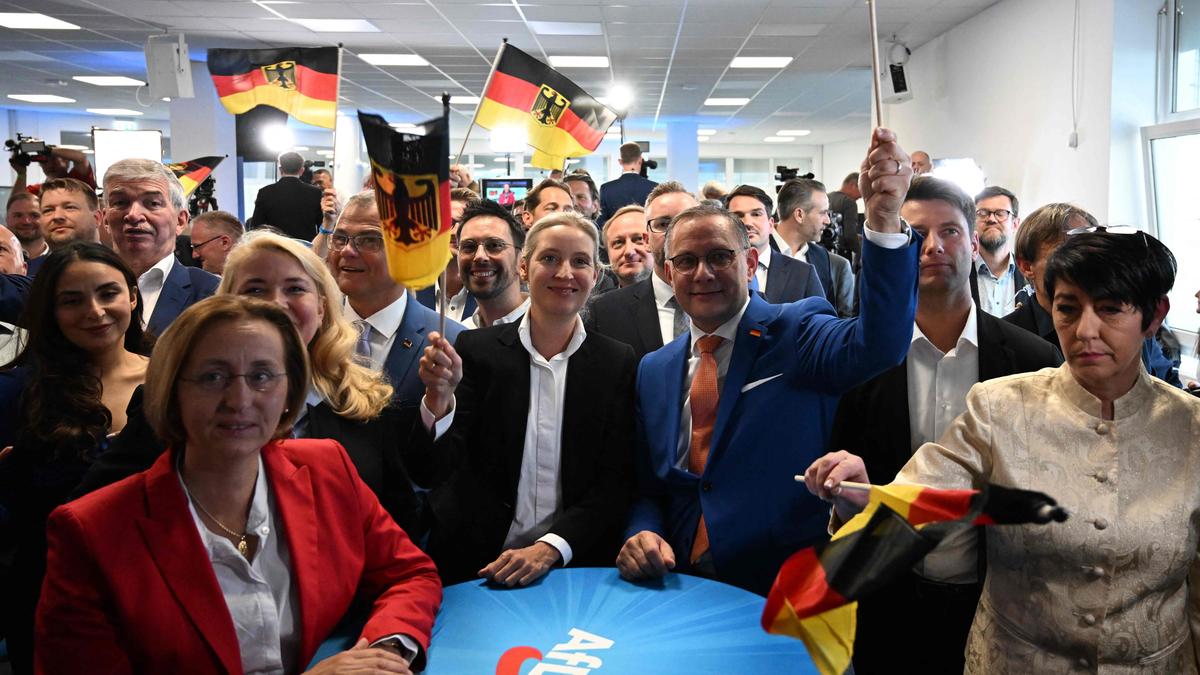
The far-right swing in European Parliament elections | Explained
The Hindu
European Parliament elections see far-right gains, impacting EU politics and climate policy, with potential shifts towards the right.
The story so far:
As 51.1% of nearly 400 million Europeans voted in marathon polls held across 27 member states of the European Union (EU) from June 6 to 9, the conservative centre-right bloc of European Commission President Ursula von der Leyen managed to retain its status as the biggest political group in the European Parliament (EP). However, right-wing and far-right parties clocked their best performance in the legislative body’s history with liberals and Greens being delivered humbling blows. The result caused French President Emanuel Macron to call for snap elections in his country on June 30, with the move being seen as a political gamble to stop in its tracks the rise of the far-right firebrand Marine Le Pen’s party, with the latter eying a Presidential term in the 2027 elections.
While the far-right wave predicted by exit polls did not materialise, far-right parties managed to make significant and historic gains in key member states — France, Germany, and Italy. In France, Ms. Le Pen’s nationalist, anti-immigration Rassemblement National (RN) became the biggest party nationally winning 31.5% of the vote and 30 of France’s 81 seats in the EP, more than double the vote captured by Mr. Macron’s centrist Renaissance party, which finished a distant second.
In Germany, the results directly brought the ruling coalition’s legitimacy into question with just 30% of German voters still supporting it. Chancellor Olaf Schulz, whose own disapproval ratings are as high as 70%, however, ruled out early national elections. The extreme right Alternative for Deutschland (AfD) party, despite being marred by a string of scandals involving espionage and bribery allegations and facing nationwide protests, came in second with a record 16% of the vote, winning more seats than Mr. Schulz’s Social Democrats (SPD), part of the ruling coalition with the Greens and the Free Democratic Party, who were also left behind by the AfD in terms of vote share numbers. Former Chancellor Angela Merkel’s centre-right Christian Democratic Union (CDU) and its sister party Christian Social Union in Bavaria (CSU), finished first securing 30% of the vote.
Italy also saw Prime Minister Georgia Meloni’s Brothers of Italy Party with neo-fascist roots consolidating its grip by capturing a quarter of the vote, while far-right parties also made gains in Austria, Hungary, and Spain.
While national political parties contest elections to the 720-seat EU body every five years, they join the transnational political groups of the EP after the polls. As of 9:00 pm, June 12, provisional results indicate a fairly strong showing of centre-right parties across Europe, with the European People’s Party group, including the CDU/CSU, emerging as the leading bloc with 189 seats. While the Socialists and Democrats (S&D), having Germany’s SPD among others, managed a narrow consolidation with 135 seats, the Renew Europe (RE) group with Mr. Macron’s Rennaissance, suffered huge losses finishing at 79 seats compared to last time’s 102. The pro-climate action Greens saw their seats reduced to 53 down from 71, becoming the sixth largest block instead of fourth. The hard and far-right European Conservatives and Reformists Group (ECR) and the Identity and Democracy Group (ID), including Ms. Meloni and Ms. Le Pen’s parties, respectively, now collectively hold 131 seats in the chamber, up from 118. The other far-right lawmakers are in the non-attached (NI) group including AfD (which was expelled from the ID in May) with 15 seats and Hungarian PM Viktor Orban’s Fidesz with 10 seats.
In 2019, with youth protests across Europe calling for climate action, the EP elections delivered a Green wave, which shaped Brussels’ five-year agenda and brought about the ambitious ‘Green Deal’, laying a roadmap for the EU’s 2040 and 2050 net-zero targets. But that was before the COVID-19 pandemic; before pan-continent farmers protests; and the Russian attack on Ukraine sending energy prices skyrocketing, leading to the worst cost-of-living crisis Europe has faced in years. Besides, the steady rise of Eurosceptic, populist, and anti-immigrant parties, some of whom deny climate change, across Europe also contributed to this year’s rightward shift.











